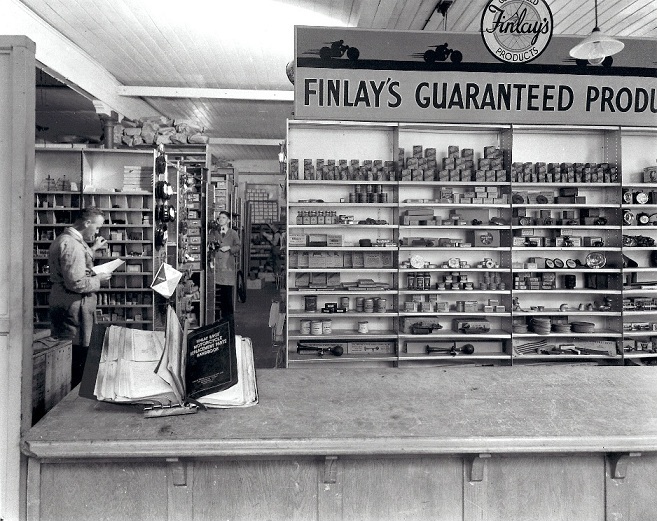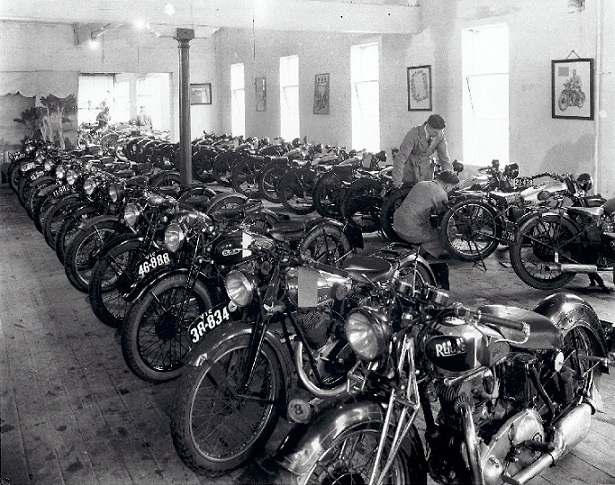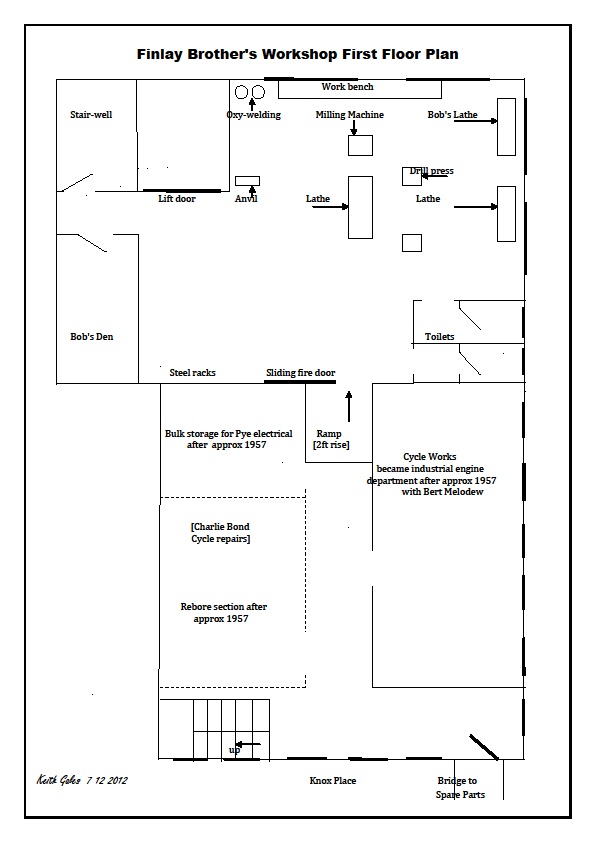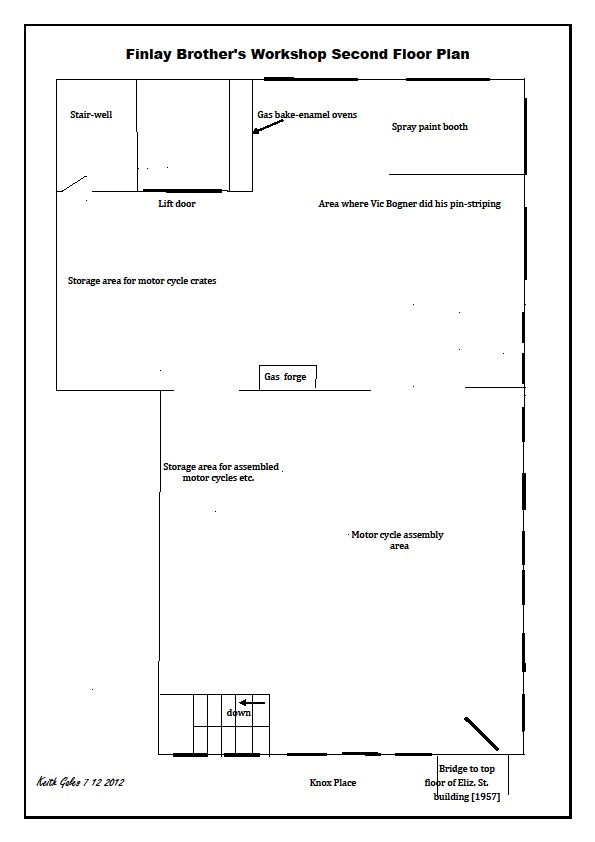Engineering Department
“On the first floor also was also where Bob Finlay, one of the brothers, had his engineering section.
Bob was famous for his pacing with Hubert Opperman… Bob’s pacing bike was a unique Excelsior motor cycle, extended in length, with a roller on the back for the push bike to go up against…
[An employee] worked on the lathes, milling machines, etc. Finlays mass produced some parts to be sold.
There was another forge there. All of the machinery there was driven by one electric motor with pulleys, belts and levers, using an idler pulley when a particular machine wasn’t being used. There was always a lot of flapping noise from the belts when the motor was going. The same system was used in [the Blacksmith and Welding] section down stairs for the grinder, buff, drill, etc.
Steel of various shapes and sizes were stored in racks there.”2
Cycle Department
“On the first floor was the cycle department, the repairs were done by Charley Bond. He had an off-side working with him…
There was a rack we put our bikes [on] when we rode to work. Charley was a wonderful fella, possibly past retiring age, it was not uncommon when I picked up my bike in the evening to go home [to find] that it had been reconditioned, I don’t know if I was the only one that got that treatment but I doubt it. Charley was fantastic and we became good friends…
The cycle department at that time was about half of the first floor but they did a lot of work. There was a forge used for building the bike frames. They turned out a lot of new Barbs. Finlay’s also sponsored bike riders, locally and overseas. Ken Stewart was one of them.”3
Second floor of Workshop:

Adrian Crothers, Pictures Collection, State Library of Victoria

Adrian Crothers, Pictures Collection, State Library of Victoria
Both of the above photographs probably show areas of the Workshop’s second floor during the 1930’s, or possibly during the 1940-41 period of construction of the new Elizabeth Street premises.
Keith Gales, employed from 1948 onward, recalls the area during that time being used for the Spray Paint Department and Motorcycle Assembly Area. After 1957, a bridge connecting the top floor of the Workshop to the main Finlay Brothers premises in Elizabeth Street was added.
Spray Paint Department
“Part of the top floor was [the] Spray Paint Section. Vic Bognor was in charge and an expert in pin-striping of fuel tanks and cycles in the paint section. Over the years I got on very well with Vic. He had an offsider ...; they painted all of the Barb Cycles including the pin-striping and fitting of the transfers. The cycle frames were baked in ovens… [Vic’s offsider] was also a good pin-striper...
With all of the forges and welding in this very old wooden building it was amazing [that] we never had any fires.
There was a gas forge moved into this area in later years after the spray painting was contracted out to Vic Bognor where he worked in his own business.”4
Motorcycle Assembly Area
“The trucks brought the crates of motorcycles down the rear street [small dead-end]... They were unloaded by hand and were very heavy. We never ever had any lifting devices except later on we got a small hydraulic trolley to move them around the building.
There was one motorcycle per crate. They were taken up in the fully laden lift...”5
“They were stored on the top floor until needed.
There were up to about 5 [staff] doing the assembly… Later on when things were booming some of us in the workshop got quite a bit of overtime doing assembly at night down stairs. We loved that and we used to challenge each other to get the bikes finished. We always seemed to work better in overtime.
The bikes were in knock-down form, (probably import duty, I'm guessing).
I think that they had been assembled and disassembled for transport, there wasn't a lot to do mainly fitting the forks and odds and ends etc.
The staff could buy the crates for 8 shillings each. I often bought them and used the timber for some of my projects.”6


References:
1. Keith Gales, personal communication, November 27, 2012.
2. Keith Gales, Unpublished memoirs (2010), p 5 of Chapter 2.
3. See note 2 above.
4. Keith Gales, Unpublished memoirs (2010), p 6 of Chapter 2.
5. Keith Gales, personal communication, November 29, 2012.
6. See note 5 above.